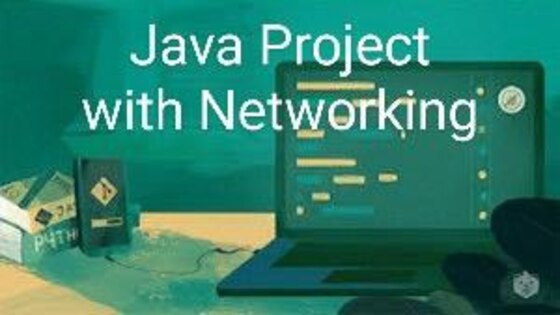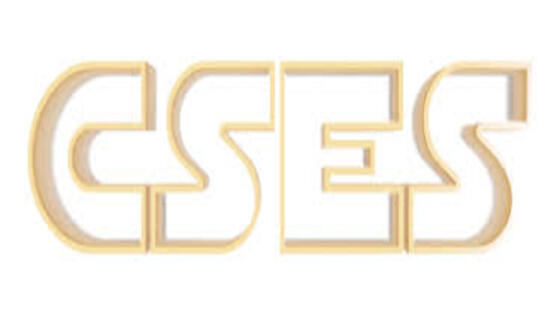Overview:
"Mission Antarctica Impossible" is a fun and challenging mini-game set in the icy landscapes of Antarctica. Developed as part of our Level-1, Term-1 coursework at BUET, this project was a collaborative effort with a fellow student.
Project Details:
Development Time: 4 weeks
Collaboration: Team project
Technologies Used: C language, iGraphics
Key Features:
Exciting Gameplay: Navigate through icy terrains and overcome obstacles to complete missions.
Visual Appeal: Created stunning graphics and animations using iGraphics.
Challenging Levels: Enjoy an engaging storyline with progressively harder levels.
"Mission Antarctica Impossible" is a fun and challenging mini-game set in the icy landscapes of Antarctica. Developed as part of our Level-1, Term-1 coursework at BUET, this project was a collaborative effort with a fellow student.
Project Details:
Development Time: 4 weeks
Collaboration: Team project
Technologies Used: C language, iGraphics
Key Features:
Exciting Gameplay: Navigate through icy terrains and overcome obstacles to complete missions.
Visual Appeal: Created stunning graphics and animations using iGraphics.
Challenging Levels: Enjoy an engaging storyline with progressively harder levels.
Health Monitoring System for Elderly Care
Overview:
This innovative health monitoring system is designed to enhance the care and safety of elderly individuals. Developed as part of the Microcontroller course (CSE-316) at the BUET CSE department, this project utilizes various sensors and microcontrollers to provide comprehensive health data and emergency alerts.
Project Details:
Development Time: 4 weeks
Collaboration: Team project with one partner
Technologies Used: ATmega32 Microcontroller, Arduino, LM35 Temperature Sensor, DHT11 Humidity Sensor, Gyroscope, LCD Display
Key Features:
Health Monitoring: Tracks body temperature, ambient humidity, BPM, and SpO2 levels. Fall Detection: Sends email notifications if a sudden fall is detected.
Real-time Data: Displays health information on an LCD screen for easy access.
Email Alerts: Sends immediate notifications to caregivers in case of emergencies.
This innovative health monitoring system is designed to enhance the care and safety of elderly individuals. Developed as part of the Microcontroller course (CSE-316) at the BUET CSE department, this project utilizes various sensors and microcontrollers to provide comprehensive health data and emergency alerts.
Project Details:
Development Time: 4 weeks
Collaboration: Team project with one partner
Technologies Used: ATmega32 Microcontroller, Arduino, LM35 Temperature Sensor, DHT11 Humidity Sensor, Gyroscope, LCD Display
Key Features:
Health Monitoring: Tracks body temperature, ambient humidity, BPM, and SpO2 levels. Fall Detection: Sends email notifications if a sudden fall is detected.
Real-time Data: Displays health information on an LCD screen for easy access.
Email Alerts: Sends immediate notifications to caregivers in case of emergencies.

Overview:
This project replicates the BUET Institutional Information System (BIIS), developed for the CSE-216 Database course in Level-2, Term-2 at BUET. It serves as a centralized platform for managing institutional information accessible to administrators, faculty, students, and parents.
Project Details:
Development Time: 5 weeks
Collaboration: Team project with a partner
Technologies Used: EJS, JavaScript, Node.js, Express, MongoDB
Platform: Web-based application
Key Features:
User Roles: Separate access levels for administrators, faculty, and students.
Centralized Data Management: Efficient handling and management of institutional data.
User Authentication: Secure login system with different roles.
Information Access: Allows users to view and manage academic information, schedules, and other institutional data.
Interactive Interface: User-friendly design for easy navigation and data access.
This project replicates the BUET Institutional Information System (BIIS), developed for the CSE-216 Database course in Level-2, Term-2 at BUET. It serves as a centralized platform for managing institutional information accessible to administrators, faculty, students, and parents.
Project Details:
Development Time: 5 weeks
Collaboration: Team project with a partner
Technologies Used: EJS, JavaScript, Node.js, Express, MongoDB
Platform: Web-based application
Key Features:
User Roles: Separate access levels for administrators, faculty, and students.
Centralized Data Management: Efficient handling and management of institutional data.
User Authentication: Secure login system with different roles.
Information Access: Allows users to view and manage academic information, schedules, and other institutional data.
Interactive Interface: User-friendly design for easy navigation and data access.

Overview:
This project was developed as part of the CSE-108 course in Level-2, Term-1 at BUET. It focuses on creating a networked application using Java, demonstrating practical applications of Java networking concepts, client-server architecture, and object-oriented programming.
Project Details:
Development Time: 4 weeks
Collaboration: Individual project
Language Used: Java
Key Features:
Client-Server Architecture: Implements a robust client-server model for network communication.
Multithreading: Supports concurrent client connections using Java multithreading.
Information Sharing: Facilitates information transfer between clients and the server.
Real-Time Update: Updates information in real-time across clients without requiring page refresh.
Hashing Method: Connects individual clients to the server using hashing, enabling easy identification of message sources.
Modular Design: Organized into packages for common classes, client-side functions, and server-side functions.
This project was developed as part of the CSE-108 course in Level-2, Term-1 at BUET. It focuses on creating a networked application using Java, demonstrating practical applications of Java networking concepts, client-server architecture, and object-oriented programming.
Project Details:
Development Time: 4 weeks
Collaboration: Individual project
Language Used: Java
Key Features:
Client-Server Architecture: Implements a robust client-server model for network communication.
Multithreading: Supports concurrent client connections using Java multithreading.
Information Sharing: Facilitates information transfer between clients and the server.
Real-Time Update: Updates information in real-time across clients without requiring page refresh.
Hashing Method: Connects individual clients to the server using hashing, enabling easy identification of message sources.
Modular Design: Organized into packages for common classes, client-side functions, and server-side functions.
Overview:
This project is a 4-variable Karnaugh map (K-map) solver implemented in Python, designed to simplify Boolean algebra problems efficiently. Developed out of personal interest and for academic enhancement, this solver provides a user-friendly interface and leverages K-map principles for logic simplification.
Project Details:
Development Time: 3 days
Platform: Python, developed in PyCharm
Background: Completed after Level-2 Term-1 at BUET (Bangladesh University of Engineering and Technology)
Key Features:
Boolean Algebra Solver: Simplifies Boolean expressions involving four variables.
User-Friendly Interface: Easy input and output for a seamless user experience.
Efficient Logic Simplification: Utilizes K-map principles to minimize logic expressions quickly and accurately.
Why K-Map?
Karnaugh maps are essential tools in digital logic design, providing a visual method for simplifying Boolean expressions. They help minimize errors and optimize circuit performance. This solver automates the process, saving time and effort for users.
This project is a 4-variable Karnaugh map (K-map) solver implemented in Python, designed to simplify Boolean algebra problems efficiently. Developed out of personal interest and for academic enhancement, this solver provides a user-friendly interface and leverages K-map principles for logic simplification.
Project Details:
Development Time: 3 days
Platform: Python, developed in PyCharm
Background: Completed after Level-2 Term-1 at BUET (Bangladesh University of Engineering and Technology)
Key Features:
Boolean Algebra Solver: Simplifies Boolean expressions involving four variables.
User-Friendly Interface: Easy input and output for a seamless user experience.
Efficient Logic Simplification: Utilizes K-map principles to minimize logic expressions quickly and accurately.
Why K-Map?
Karnaugh maps are essential tools in digital logic design, providing a visual method for simplifying Boolean expressions. They help minimize errors and optimize circuit performance. This solver automates the process, saving time and effort for users.
Overview:
This project is a simple and efficient C program that generates a calendar for any specified month and year. Developed as part of an assignment in Level-1, Term-1 at BUET (Bangladesh University of Engineering and Technology), this program demonstrates practical applications of date calculations and logical programming.
Project Details:
Development Time: 2 days
Language Used: C
Verification: Accuracy verified against an online calendar tool
Key Features:
Calendar Generation: Creates a calendar for any given month and year.
Logical Accuracy: Determines the correct day of the week for any date.
User-Friendly Code: Simple and easy-to-understand code structure
This project is a simple and efficient C program that generates a calendar for any specified month and year. Developed as part of an assignment in Level-1, Term-1 at BUET (Bangladesh University of Engineering and Technology), this program demonstrates practical applications of date calculations and logical programming.
Project Details:
Development Time: 2 days
Language Used: C
Verification: Accuracy verified against an online calendar tool
Key Features:
Calendar Generation: Creates a calendar for any given month and year.
Logical Accuracy: Determines the correct day of the week for any date.
User-Friendly Code: Simple and easy-to-understand code structure

Overview:
These courses, DSA-I and DSA-II, were completed at BUET and focused on key data structures and algorithms concepts. Each course involved weekly assignments, where classic problems were tackled using various techniques.
I thoroughly enjoyed these courses, which provided me with a deep understanding of essential algorithms and problem-solving techniques. Working on these problems individually helped solidify my knowledge and enhance my analytical skills.
Key Topics:
Greedy Algorithms
Divide & Conquer
Dynamic Programming
Graph Algorithms
Details:
Completion Time: Completed over two university courses
Collaboration: Individual work on weekly assignments
Skills Gained: Strong foundation in problem-solving and algorithm design
These courses, DSA-I and DSA-II, were completed at BUET and focused on key data structures and algorithms concepts. Each course involved weekly assignments, where classic problems were tackled using various techniques.
I thoroughly enjoyed these courses, which provided me with a deep understanding of essential algorithms and problem-solving techniques. Working on these problems individually helped solidify my knowledge and enhance my analytical skills.
Key Topics:
Greedy Algorithms
Divide & Conquer
Dynamic Programming
Graph Algorithms
Details:
Completion Time: Completed over two university courses
Collaboration: Individual work on weekly assignments
Skills Gained: Strong foundation in problem-solving and algorithm design

Oerview:
I am deeply passionate about problem-solving and spend my free time coding solutions. I particularly enjoy the CSES problem set, which includes 300 classic problems ranging from beginner to advanced levels.
Experience:
Problems Solved: 80+ problems
Approach: Each problem is solved with a thorough understanding. For algorithms unknown to me, I first learn the algorithm and then implement it to solve the problem.
Highlights:
Solving these problems has been an enjoyable and enriching experience, enhancing my problem-solving skills and deepening my knowledge of algorithms.
I am deeply passionate about problem-solving and spend my free time coding solutions. I particularly enjoy the CSES problem set, which includes 300 classic problems ranging from beginner to advanced levels.
Experience:
Problems Solved: 80+ problems
Approach: Each problem is solved with a thorough understanding. For algorithms unknown to me, I first learn the algorithm and then implement it to solve the problem.
Highlights:
Solving these problems has been an enjoyable and enriching experience, enhancing my problem-solving skills and deepening my knowledge of algorithms.
Competitive Programming Setup
I have created a helpful collection of pre-written code for competitive programming. This code is efficient, easy to understand, and ready to use in competitions.You can find it HERE
